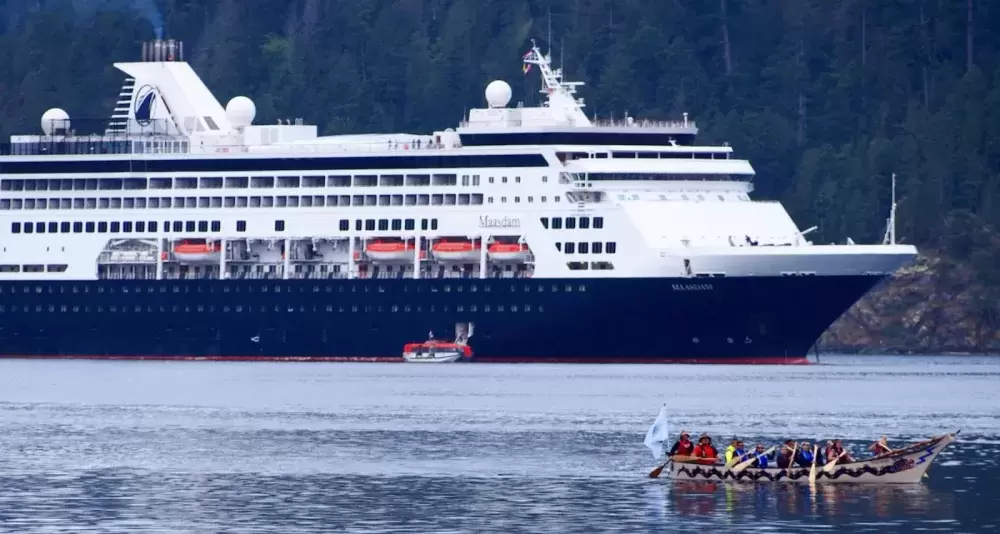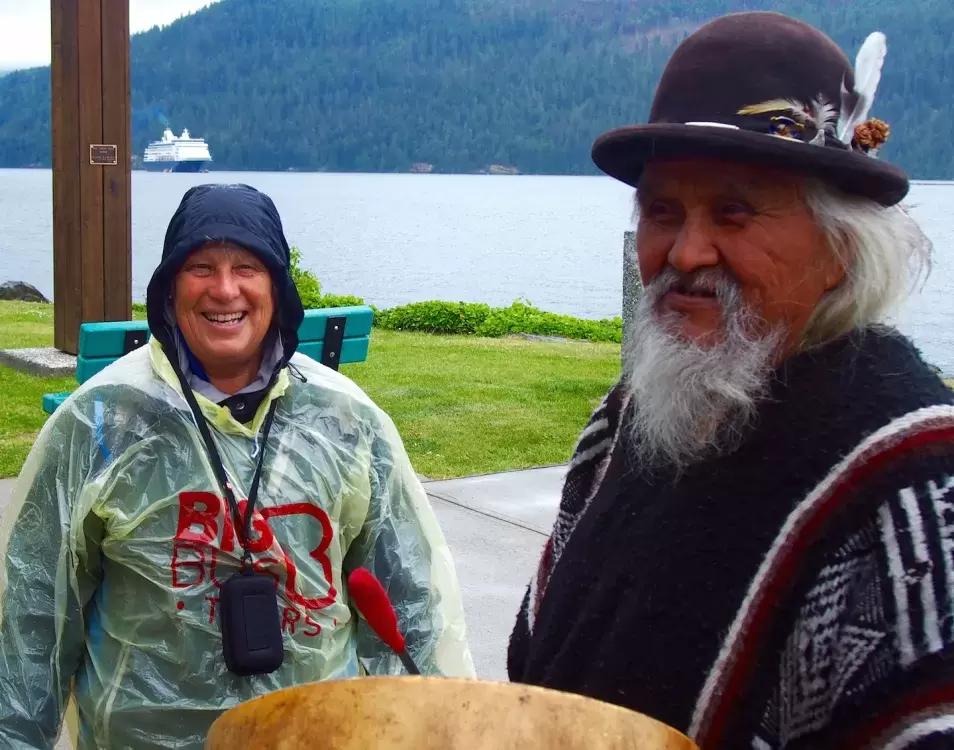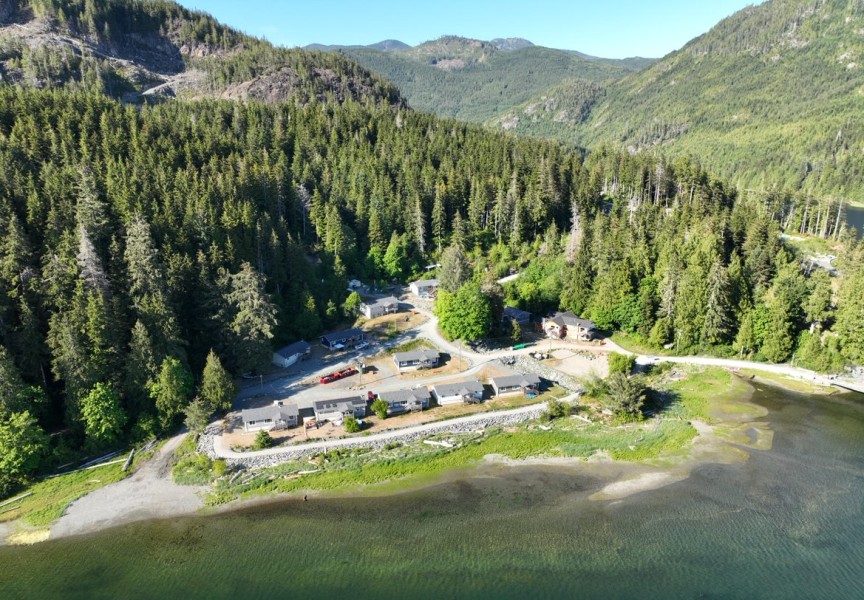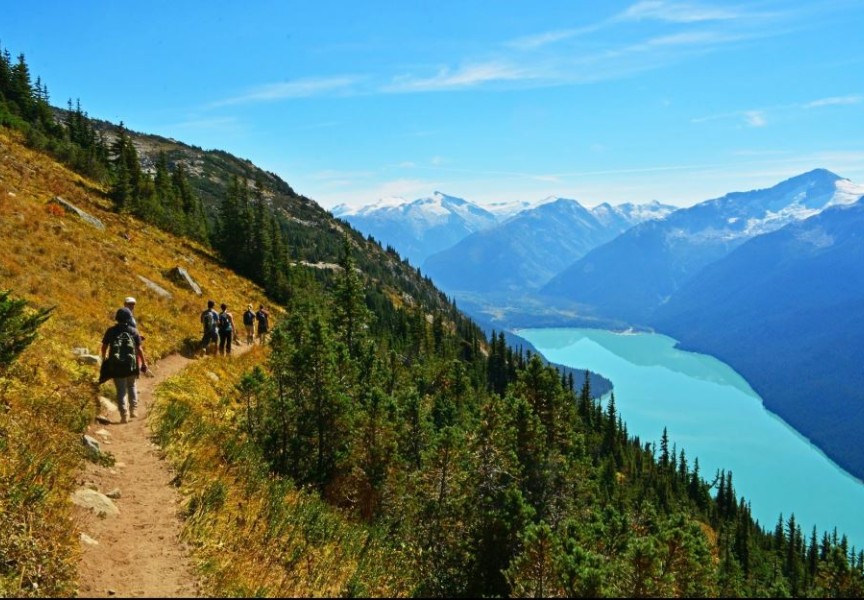Lax regulations compared to neighbouring U.S. states have made Canada’s West Coast a convenient dumping ground for cruise ship pollution, environmentalists believe.
While the cruise ship industry disputes the claim and defends its standards, Stand.earth and West Coast Environmental Law (WCEL) are pressing the federal government to step up with marine discharge regulations comparable to those in California, Washington and Alaska.
The two groups — with vocal support from Nuu-chah-nulth Tribal Council — say their investigation determined that cruise ship companies take advantage of Canada’s relatively weak regulation of cruise ship pollution.
Canada adopted new regulations a decade ago, but the report says they still fall short of standards in other West Coast jurisdictions north and south, a difference that gives cruise ships an incentive to discharge waste in Canadian waters. The report points to a boom in cruise ship traffic in recent years and estimates they discharge annually more than 31 billion litres of sewage, waste or grey water and, with newer ships, wash water from scrubbed exhaust emissions as they travel through B.C. waters.
“The shocking findings of this report are that Canada has the weakest regulations along the West Coast, and as a result, ships are using our coast as a toilet bowl,” said Anna Barford of Stand.earth. “Cruise ships are literally holding onto pollution as they traverse California, Washington or Alaska, and then dumping it off into our coast, even in the Great Bear Rainforest.”
Changes should be made now, with cruise ships tied up during a pandemic shutdown, so that Canada can be ready when the industry resumes operations, Barford added.
“Nuu-chah-nulth nations are calling on the federal government to change the laws that regulate the cruise ship industry dumping their harmful waste into our ocean waters,” said NTC President Judith Sayers, who took part in a joint news conference via Zoom on Wednesday, Feb. 3. “Our oceans are our bread basket where we get all the sea resources we rely on for food, and the waters must be protected from harmful substances.”
A day after Stand.earth’s news conference, the federal government extended its COVID-19 cruise ship ban for more than a year, until Feb. 28, 2022.
Cruise lines usually drive a $2.7 billion industry in B.C., employing an estimated 17,000 workers. The sector is considered a major contributor to the Canadian economy as well. Industry representatives listened closely to the news conference.
“It’s difficult to put it in context but we do feel their findings make a lot of assumptions that are not rooted in the data,” said Donna Spalding of Cruise Lines International Association, which represents the major lines.
Cruise ships are subject to robust third-party oversight and inspections by governments to ensure they meet international standards, Spalding said. Companies have invested $23.5 billion into new technology and the use of cleaner fuels to reduce carbon emissions, she noted.
“We’re not insensitive to how people feel about the environment or how they want to protect it,” Spalding said. “In fact, cruise lines rely on being sensitive to it.”
The Stand.earth/WCEL report is also critical of an innovation in the industry to reduce air pollution. More cruise ships are being built with exhaust gas cleaning systems that enable continued use of high-sulfur heavy fuel oil rather than more costly but cleaner marine gas oil. Scrubbers use sea water to remove sulfur oxides and the wash water is discharged into the ocean. The report recommends prohibiting them. It also calls for designation of no-discharge zones in sensitive areas similar to the protection of Puget Sound in Washington state.
“The pandemic has given us a unique opportunity to pause and reflect on the significant risks that the cruise ship industry poses to marine ecosystems on the Pacific coast,” added Michael Bissonnette, staff lawyer with WCEL, a long-time advocate on environmental matters. “If Canada is truly committed to protecting the health of its coastlines, it must update its current regulations immediately before the cruise industry attempts to pick up where it left off in 2019.”
Chamber of Shipping President Robert Lewis-Manning was also listening Wednesday. The chamber serves as a public voice for the marine industry. Lewis-Manning said it was not the first time Stand.earth has made this case. He feels their data is weak or misleading, though he agrees there is a need for better monitoring and data.
Do cruise ships take advantage of lax regulations here?
“I don’t think so, and it’s not as black and white as they may see it,” Lewis-Manning said of the Stand.earth assertion. “The reality is the regulations are very different. Sewage discharge rules are more stringent in Canada.”
Transport Canada, which bears responsibility for regulating marine discharges, said it is reviewing the report’s recommendations before commenting in detail.
Sau Sau Liu, a Transport Canada spokeswoman, said Canada follows International Maritime Organization guidelines updated in 2012. Vessels operating in Canadian waters can only burn fuel with a maximum sulphur content of up to 0.10 percent. To meet this, they can use scrubbers, including closed, hybrid or open-loop systems.
IMO rules require continuous monitoring of a vessel’s wash water discharges for pH as a measure of acidity, polycyclic aromatic hydrocarbons as a measure of oil components, and turbidity as a measure of suspended solids.
“Usually, vessels that are going to Alaska are equipped with advanced wastewater treatment plants, which have the ability to treat sewage and result in effluent discharges that are of a high quality and purity that exceed regulatory requirements,” Liu noted in an email response.
She added the IMO is working with Transport Canada on measures to address greenhouse gas emissions and to meet the goals of its initial strategy, including phasing out emissions from the cruise ship sector.
The industry has 26 LNG-powered ships in production but Barford feels LNG offers no environmental gains as another greenhouse gas.
In 2019, Holland America’s Maasdam visited Port Alberni three times. The company was testing the waters for a fresh approach to cruise itineraries, offering more active onshore activities in hopes of attracting younger passengers.








